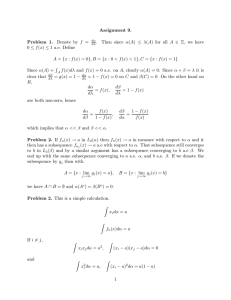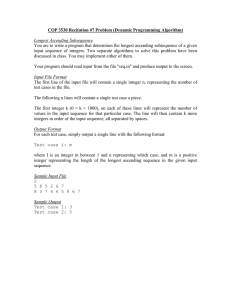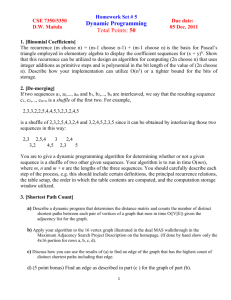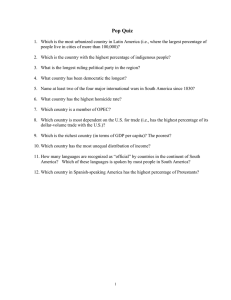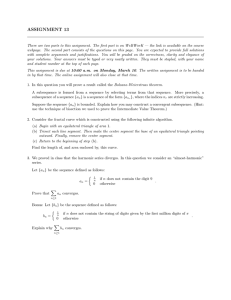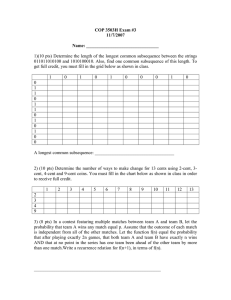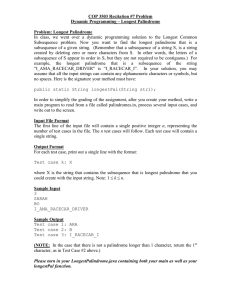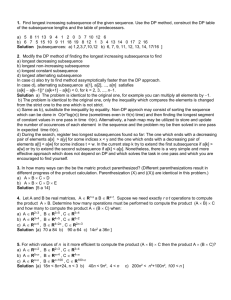Sheet 7
advertisement
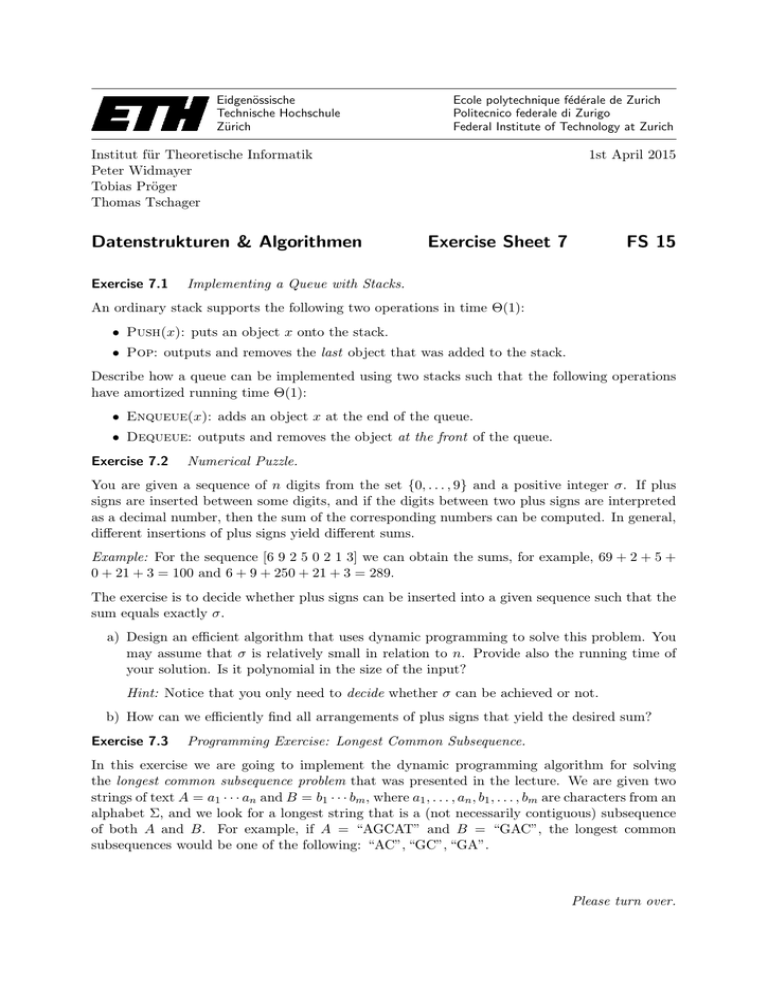
Eidgenössische
Technische Hochschule
Zürich
Ecole polytechnique fédérale de Zurich
Politecnico federale di Zurigo
Federal Institute of Technology at Zurich
Institut für Theoretische Informatik
Peter Widmayer
Tobias Pröger
Thomas Tschager
Datenstrukturen & Algorithmen
Exercise 7.1
1st April 2015
Exercise Sheet 7
FS 15
Implementing a Queue with Stacks.
An ordinary stack supports the following two operations in time Θ(1):
• Push(x): puts an object x onto the stack.
• Pop: outputs and removes the last object that was added to the stack.
Describe how a queue can be implemented using two stacks such that the following operations
have amortized running time Θ(1):
• Enqueue(x): adds an object x at the end of the queue.
• Dequeue: outputs and removes the object at the front of the queue.
Exercise 7.2
Numerical Puzzle.
You are given a sequence of n digits from the set {0, . . . , 9} and a positive integer σ. If plus
signs are inserted between some digits, and if the digits between two plus signs are interpreted
as a decimal number, then the sum of the corresponding numbers can be computed. In general,
different insertions of plus signs yield different sums.
Example: For the sequence [6 9 2 5 0 2 1 3] we can obtain the sums, for example, 69 + 2 + 5 +
0 + 21 + 3 = 100 and 6 + 9 + 250 + 21 + 3 = 289.
The exercise is to decide whether plus signs can be inserted into a given sequence such that the
sum equals exactly σ.
a) Design an efficient algorithm that uses dynamic programming to solve this problem. You
may assume that σ is relatively small in relation to n. Provide also the running time of
your solution. Is it polynomial in the size of the input?
Hint: Notice that you only need to decide whether σ can be achieved or not.
b) How can we efficiently find all arrangements of plus signs that yield the desired sum?
Exercise 7.3
Programming Exercise: Longest Common Subsequence.
In this exercise we are going to implement the dynamic programming algorithm for solving
the longest common subsequence problem that was presented in the lecture. We are given two
strings of text A = a1 · · · an and B = b1 · · · bm , where a1 , . . . , an , b1 , . . . , bm are characters from an
alphabet Σ, and we look for a longest string that is a (not necessarily contiguous) subsequence
of both A and B. For example, if A = “AGCAT” and B = “GAC”, the longest common
subsequences would be one of the following: “AC”, “GC”, “GA”.
Please turn over.
The algorithm uses a table A[·, ·] with n + 1 rows and m + 1 columns. For 0 ≤ i ≤ n and
0 ≤ j ≤ m, the entry A[i, j] represents the length of the longest common subsequence for the
substrings of the original strings a1 · · · ai and b1 · · · bj . For i, j ≥ 1, it is computed as follows:
(
A[i − 1, j − 1] + 1
if ai = bj
A[i, j] =
(1)
max{A[i − 1, j], A[i, j − 1]} otherwise.
Since i = 0 and j = 0 represent the empty substrings, A[i, 0] and A[0, j] are set to 0 for every i,
0 ≤ i ≤ n and for every j, 0 ≤ j ≤ m.
After the table has been filled, the entry A[n, m] contains the
A[i, j] ∅ Z I E G E
length k of the longest common subsequence. The longest
∅ 0 0 0 0 0 0
common subsequence itself is reconstructed from there using
Z 0 1 1 1 1 1
backtracing. If an = bm , we set an as the k-th character of the
E 0 1 1 2 2 2 (2)
0 1 1 2 2 2
B
longest common subsequence, set k ← k − 1 and continue in
R
0 1 1 2 2 2
the same fashion with the entry A[n − 1, m − 1]. If an 6= bm ,
0 1 1 2 2 2
A
then we check whether A[n, m] = A[n − 1, m] holds. If yes,
then we continue with A[n − 1, m], and with A[n, m − 1] otherwise. We stop once we have read
all the k characters of the longest common subsequence. On the right, you can see the table
A[i, j] for the example strings A = “ZEBRA” and B = “ZIEGE”.
Input The first line contains only the number t of test instances. After that, we have exactly
two lines per test instance. The first line contains the sequence A, and the second line contains
the sequence B. The alphabet used is Σ = {A, B, . . . , Z}.
Output For every test instance we output only one line. This line contains the length of the
longest common subsequence followed by the longest common subsequence computed by the
above algorithm.
Example
Input:
2
AGCAT
GAC
ROCK
ROLL
Output:
2 AC
2 RO
Hint
Use the code fragment
String A = scanner.next();
String B = scanner.next();
to read the complete strings A and B for each test instance. Furthermore, for a string s, you
can use s.length() to determine its length, and s.charAt(index) to access the character of s
located at the position index.
Hand-in: until Wednesday, 15th April 2015.
2

